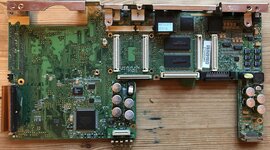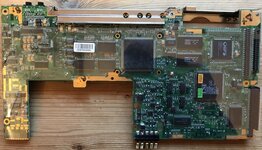Phipli
Well-known member
CongratulationsOh, gosh, this is amazing! My 'spare' PowerBook 1400, the one that barely works (in a sense); has a faulty PCMCIA connector and I think the drive connector doesn't work, in fact has the Motherboard that will boot the 166MHz CPU! I get a chime and an image on the (now) cs display. There's no drive attached, so it just sits there with the floppy disk ?ing at me!
This means, in theory I can do the upgrade! It also means I have a significant amount of work ahead of me to swap the motherboards!
That's nuts: I've been basically treating that one as the rubbishy spare one and downgrading it over time: removing 16MB of RAM; swapping its 1400c display for the other PB's cs display; despising it for the meagre space it's taking up. And now it turns out it's the one I need! Hoarders of the world, rejoice!
-cheers from Julz
Should be quite a speed bump. Might even match the speed of a 100MHz 8100 after the upgrade


